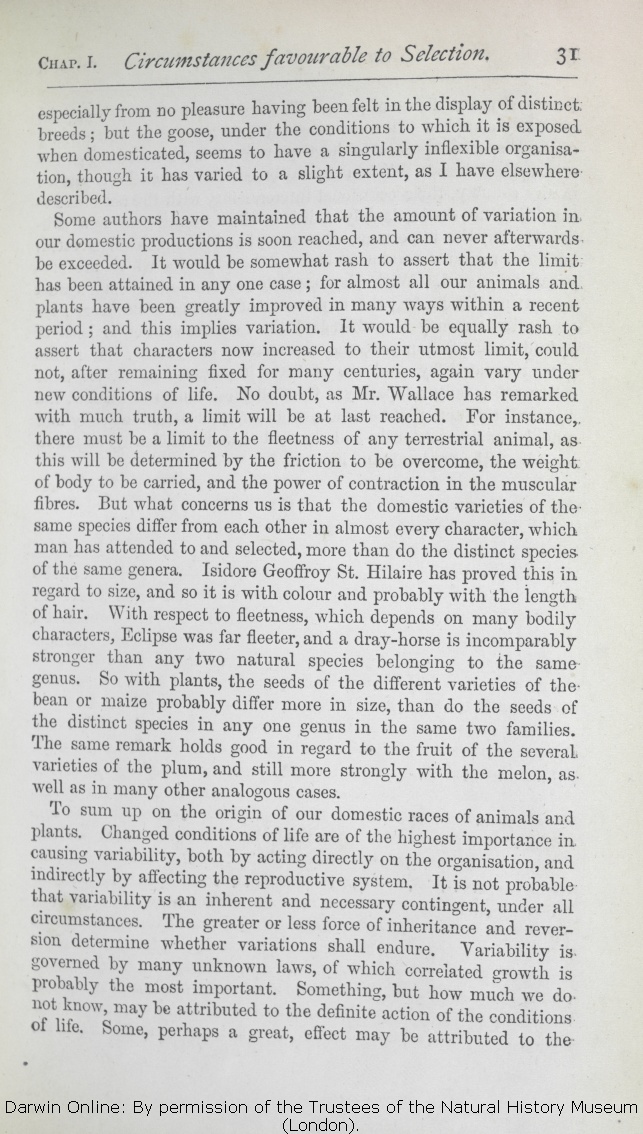|
but the goose, under the conditions to which it is exposed when domesticated, seems to have a singularly inflexible organisation, though it has varied to a slight extent, as I have elsewhere described. |
|
Some authors have maintained that the amount of variation in our domestic productions is soon reached, and can never afterwards be exceeded. It would be somewhat rash to assert that the limit has been attained in any one case; for almost all our animals and plants have been greatly improved in many ways within a recent period; and this implies variation. It would be equally rash to assert that characters now increased to their utmost limit, could not, after remaining fixed for many centuries, again vary under new conditions of life. No doubt, as Mr. Wallace has remarked with much truth, a limit will be at last reached. For
instance, | instance, 1872 | | instance 1869 |
| characters, 1872 | | characteristics, 1869 |
| species belonging to the same genus. 1872 |
| species. 1869 |
| probably differ 1872 | | differ 1869 |
|
|
To sum up on the origin of our
domestic | domestic 1861 1866 1869 1872 | | Domestic 1859 1860 |
| races 1861 1866 1869 1872 | | Races 1859 1860 |
| 1 blocks not present in 1869 1872; present in 1859 1860 1861 1866 | | I believe that the conditions of life, from their action on the reproductive system, are so far of the
highest importance as causing variability.
|
| by acting directly 1872 |
| directly by acting 1869 |
| of which correlated growth is probably the most important. 1872 |
| more especially by that of correlation of growth. 1859 1860 1861 1866 |
| more especially by that of correlation. 1869 |
| Something, 1872 | | Something 1859 1860 1861 1866 | | Some- thing 1869 |
| but how much we do not know, may 1872 |
| may 1859 1860 1861 1866 1869 |
| definite 1869 1872 | | direct 1859 1860 1861 1866 |
| life. 1859 1860 1861 1866 1872 |
| life, but how much we do not know. 1869 |
| Some, perhaps a great, effect may 1872 |
| Something must 1859 1860 1861 1866 1869 |
| the increased use or disuse of parts. 1872 |
| use and disuse. 1859 1860 1861 1866 1869 |
|









